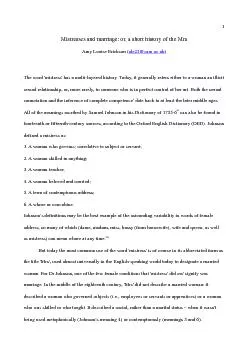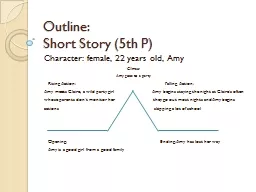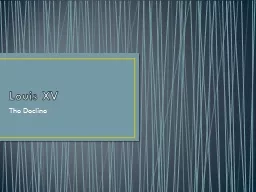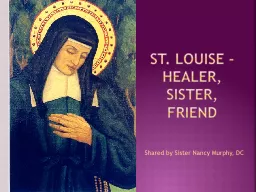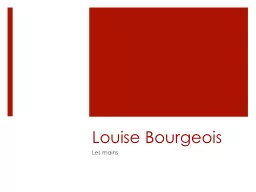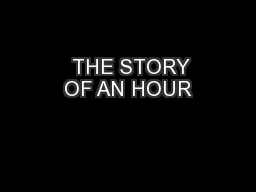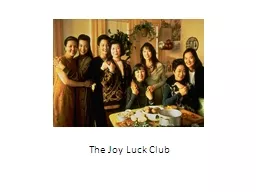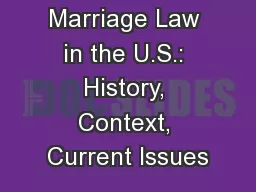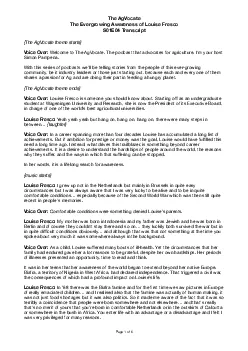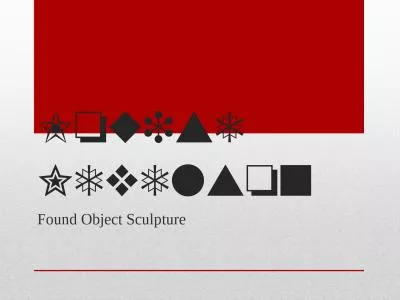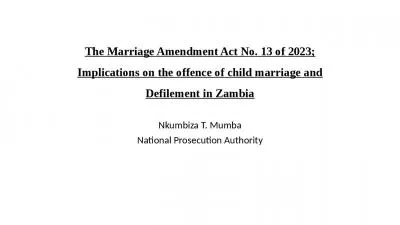PDF-Mistresses and marriage: or, a short history of the Mrs Amy Louise Er
Author : giovanna-bartolotta | Published Date : 2015-09-07
The word mistress has a multilayered history Today it generally refers either to a woman an illicit sexual relationship or more rarely to someone who is in perfect
Presentation Embed Code
Download Presentation
Download Presentation The PPT/PDF document "Mistresses and marriage: or, a short his..." is the property of its rightful owner. Permission is granted to download and print the materials on this website for personal, non-commercial use only, and to display it on your personal computer provided you do not modify the materials and that you retain all copyright notices contained in the materials. By downloading content from our website, you accept the terms of this agreement.
Mistresses and marriage: or, a short history of the Mrs Amy Louise Er: Transcript
Download Rules Of Document
"Mistresses and marriage: or, a short history of the Mrs Amy Louise Er"The content belongs to its owner. You may download and print it for personal use, without modification, and keep all copyright notices. By downloading, you agree to these terms.
Related Documents

